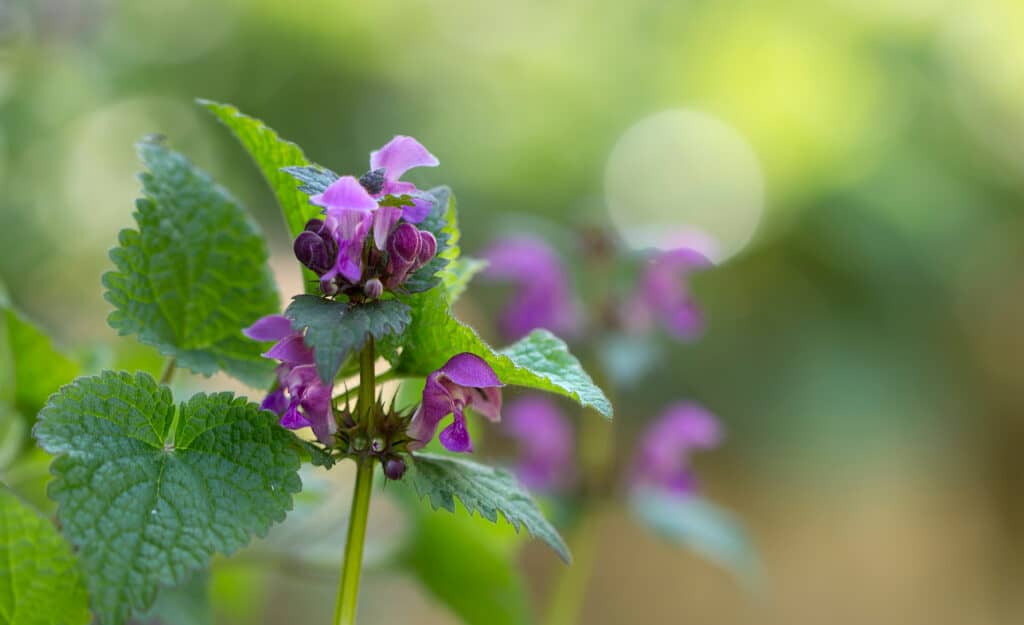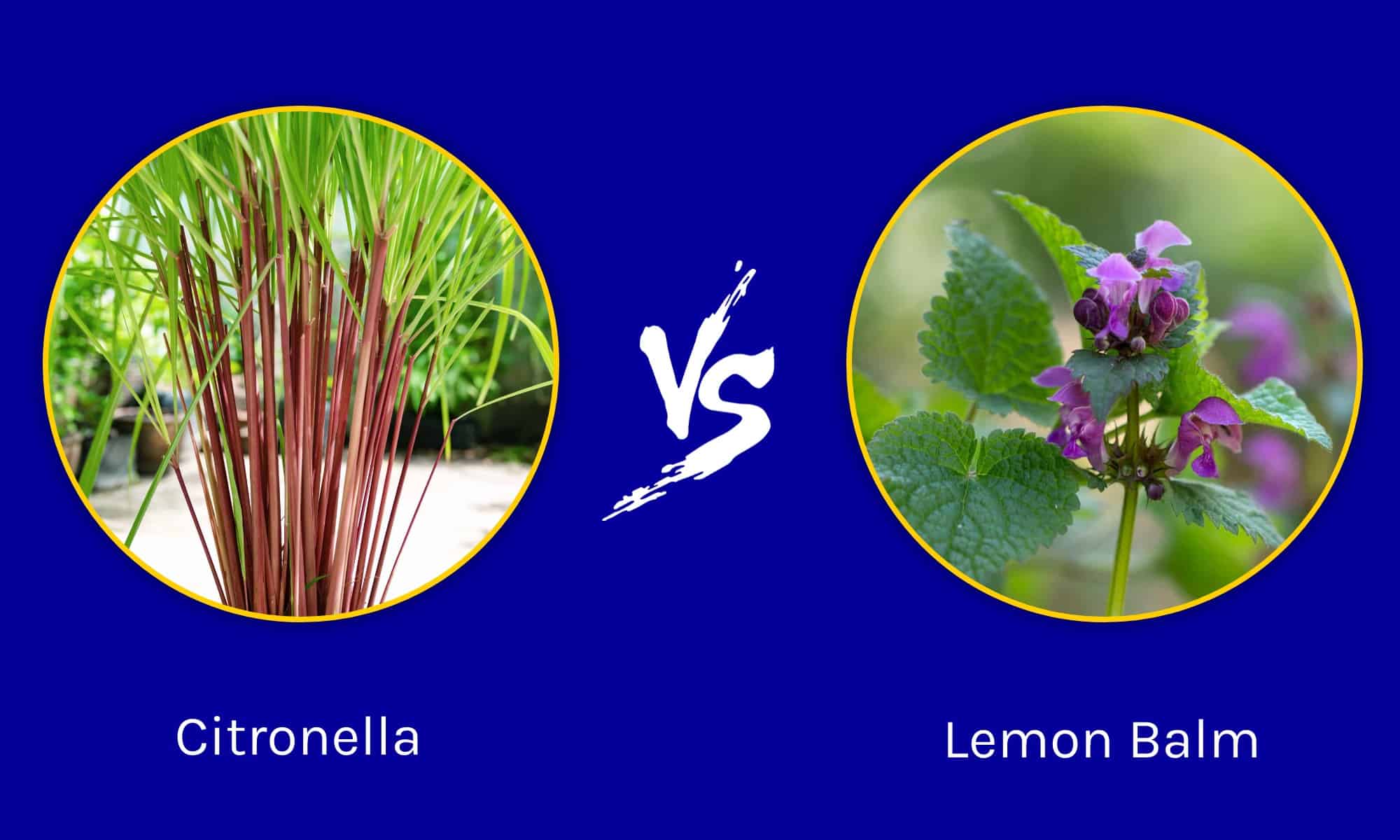Citronella and Lemon Balm are very similar and share many characteristics. For some purposes, they can be used interchangeably. They are both easy-to-grow perennials that add visual interest to the garden, require very little care, and attract bees and butterflies.
However, we will go over a few key differences here. Let’s take a look at how these two strong-smelling plants are alike and how they are different.
Comparison of Citronella vs. Lemon Balm

The fragrant lemon balm, however, hails from central Europe and enjoys a chillier winter.
©Ulrike Adam/Shutterstock.com
| Characteristic | Citronella | Lemon Balm |
|---|---|---|
| Scientific Name | Cymbopogon Nardus | Melissa Officinalis |
| Family | Member of the lemongrass family | Member of the mint family |
| Lifespan | Perennial, indefinite | Perennial, indefinite |
| Size | 6.5 feet (2 meters) | 3 feet (1 meter) |
| Country of origin | Asia, Africa, Australia | South-Central Europe, Central Asia, Meditteranean Basin |
| Age | Cultivated since the 17th century | Cultivated since the 16th century |
| Appearance | Herbaceous with white flowers in the summer | Grassy, hairy spikelets that project from boat-shaped spathes |
| USDA Hardiness Zone | Zones 9-11 | Zones 4-9 |
Key Differences Between Citronella and Lemon Balm
The key differences between citronella and lemon balm include the hardiness zone, growth pattern, uses, and garden interest.
Let’s go over all of the differences in greater detail now.
Citronella vs Lemon Balm: Hardiness Zone
Citronella is from warm tropical regions and prefers balmy and sunny climates. It is happiest in USDA hardiness zones 9 through 11. This means that the very coldest temperatures it can withstand are 20-30 degrees Fahrenheit.
The fragrant lemon balm, however, hails from central Europe and enjoys a chillier winter. Lemon Balm is well suited to USDA Hardiness zones 4 through 9. This tough cookie can survive in temperatures as low as -30 degrees Fahrenheit.
Citronella vs. Lemon Balm: Growth Pattern
Citronella is a perennial grass, a member of the lemongrass family. It looks very similar in appearance to pampas grass, with long hairy spikes that sway in the breeze. It grows up to 6 feet tall and takes up quite a bit of space in the garden. It also provides great visual interest in a large space, requiring very little maintenance.
Lemon Balm is an herbaceous perennial, a member of the mint family. It has a similar appearance and growth habit to all mints, which means it grows and spreads quickly. While not as invasive as other mints, it self-seeds every fall, leaving you lots of free seedlings to give away. It is also more attractive to bees and butterflies, having loads of tiny white flowers covering every stalk in summer.
Citronella vs. Lemon Balm: Uses

Citronella is an excellent choice for a privacy screen and will double as an insect repellant near your patio or pool.
©warat42/Shutterstock.com
Citronella is most commonly grown for its oil. It has been burned in candles and used as an insect repellant and insect spray. A few varieties of Cymbopogon are edible, but it is not commonly grown for culinary use. Some varieties are poisonous and very hard to tell apart, so consumption is not recommended.
On the other hand, Lemon Balm is commonly grown for its edible leaves and used in tea and flavorings. It holds its strong lemon scent very well after drying and is a common ingredient in gourmet soap. Lemon balm is also used as an insect repellant and candle perfume.
Citronella vs. Lemon Balm: Garden Interest
Citronella is a clumping grass that does not spread. It grows quite tall and is an excellent statement piece at the back of a border. It is often seen planted as a frame, with one on each side of a driveway or doorway. It is an excellent choice for a privacy screen and will double as an insect repellant near your patio or pool.
Lemon balm is a spreading plant that will creep along, getting wider and wider each year. It is often given its own four-foot by four-foot square plot in the herb garden so that it is contained on all sides. It is an excellent addition to the garden for anyone interested in bee conservation or beekeeping for honey. The resulting honey has a sweet lemon scent that is highly sought after.
As you can see, there are many differences between Citronella and Lemon Balm. We hope this guide will help you pick the perfect plant for your garden.
NEXT UP…
Thank you for reading! Have some feedback for us? Contact the AZ Animals editorial team.








